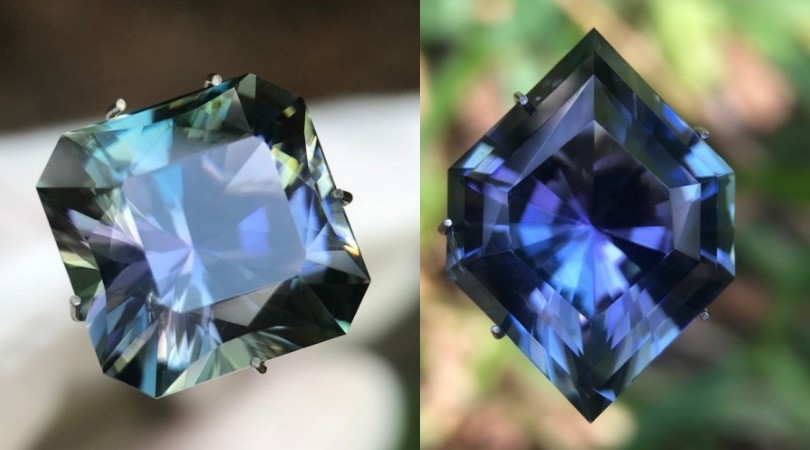
Zašto je sada pravo vrijeme za kupnju tanzanita
 Napisao Paul Sedawie, Seda Quality Rough .
Napisao Paul Sedawie, Seda Quality Rough .
Na putovanju u Tanzaniju 2012. godine posjetio sam najveći rudnik tanzanita pod nazivom „Tanzanite One“ gdje sam imao sreću podijeliti roštiljski ručak s upraviteljem rudnika. Razgovarali smo uz nekoliko piva i spomenuo je da je zabrinut zbog visokih troškova proizvodnje. Ako cijene ostanu iste, bio je zabrinut kako će to utjecati na budućnost rudnika. Spomenuo je i određeno političko uplitanje, ali nisam previše razmišljao o tome u to vrijeme jer se svi rudari žale na troškove. Također je spomenuo da tvrtka razmatra rudarstvo safira u Australiji i razgovarali smo o našoj stabilnoj vladi i dobroj poslovnoj klimi ovdje. Da biste pročitali više o mom putovanju u Tanzaniju 2012. godine, kliknite ovdje .
TRENUTNO STANJE U TANZANIJI
Ako premotamo nekoliko godina unaprijed, čini se da su se njegovi najgori strahovi i predviđanja zapravo ostvarili. Tvrtka je napustila Tanzaniju i sada kopa safire u Australiji. Čuo sam izvješća da su inženjeri i geolozi koji rade na rudniku imali problema s dobivanjem viza za ponovni ulazak u Tanzaniju. Ako je to istina, to znači da je tvrtka bila prisiljena prodati rudnik, jer bi bilo preteško nastaviti rudarenje. Rudnik su od tada preuzeli lokalni stanovnici koji imaju jake veze s vladom. Nažalost, čini se da lokalni stanovnici nisu bili iskusni u oponašanju operacija i proizvodnja je opala što je rezultiralo nedavnim otpuštanjem 600 rudarskih radnika.

BUDUĆNOST PROIZVODNJE TANZANITA
Novi predsjednik Tanzanije, John Magufuli, protivi se korupciji i čini se da je krijumčarenje tanzanita doseglo endemske razmjere, a državni prihodi su u posljednje vrijeme pali na samo 10%. Neka izvješća kažu da se preko 40% proizvodnje tanzanita krijumčari, a zalihe se deklariraju po niskim vrijednostima kako bi se uštedjelo na carinama. Vlada je u rujnu 2018. najavila izgradnju zida od 24 kilometra po cijeni od 2,2 milijuna dolara oko rudarskog područja Merelani kako bi se nadzirali radnici koji ulaze i izlaze s lokacije. Kada sam zadnji put posjetio, oko rudarskog područja bila je žičana ograda sa stražarima posvuda. Nova ograda je čvrsti zid od opeke i možda će je čak nadzirati i vojska.
Sada mnogi inozemni kupci neće kupovati u Tanzaniji, već će tražiti da se roba doveze u Nairobi u Keniji radi plaćanja, jer su zabrinuti zbog vladinih politika, a mito tamo nije neuobičajeno. Mnogi lokalni trgovci u Arushi, i veliki i mali, pogođeni su ogromnim poreznim računima koji sežu do stotina tisuća američkih dolara svaki.

Mali rudarski pogon s jednim zaposlenikom pogođen je računom od 250.000 dolara i nažalost razmišlja o zatvaranju. Sve je to rezultiralo ogromnim padom proizvodnje s velikih na male obrtničke rudare. Očekuje se da će vlada i dalje provoditi aukcije tanzanita, ali cijene će biti visoke.
Čini se da su pohlepa, korupcija i krijumčarenje utjecali na ovaj prekrasni kamen koji bi trebalo smatrati velikom imovinom za zemlju.
Kupite tanzanit
Pretražite Gemstone Encyclopedia
Povezane aukcije
povezani članci
Jedan od naših prodavača nedavno se vratio s tanzanijskog sajma dragulja. Također je imao iskustvo obilaska rudnika tanzanita i rudnika tsavorita.
15th Nov 2018
Jeremevit je vrlo rijedak dragi kamen poznat po svojim plavim ili žutim bojama i visokoj vrijednosti. Otkrijte podrijetlo, cijene, povijest i svojstva dragog kamenja jeremejevita.
19th Mar 2020
Kolumbijski smaragdi su dugo bili zvijezde svijeta smaragda. Sada zambijski smaragdi doživljavaju uspon. Evo što trebate znati o njima.
9th May 2018
Najnoviji članci
Hiolit je rijedak, bezbojan do bijeli mineral srodan kriolitu. Dragulji su vrlo rijetki, samo iz nekoliko izvora. Otkrijte upotrebu, povijest, cijene i svojstva kiolita ovdje.
5th Dec 2025
Breithauptit je bakrenocrveni do ljubičasti antimonov mineral srodan niklu, poznat po svom metalnom sjaju i vezama sa srebrnim rudama. Saznajte povijest, svojstva, vrijednost i upotrebu breithauptita!
21st Nov 2025
Wilkeit je mineral iz skupine apatita poznat po svom otkriću u Kaliforniji i prekrasnim plavim, ružičastim ili ljubičastim nijansama. Saznajte više o povijesti, svojstvima, cijenama i upotrebi wilkeita u ovom vodiču.
17th Nov 2025
Kategorije članaka
How To's is where you will find helpful articles from gem Rock Auctions on how to cut gemstones, select gemstones and buy gemstones.
9 Članci





